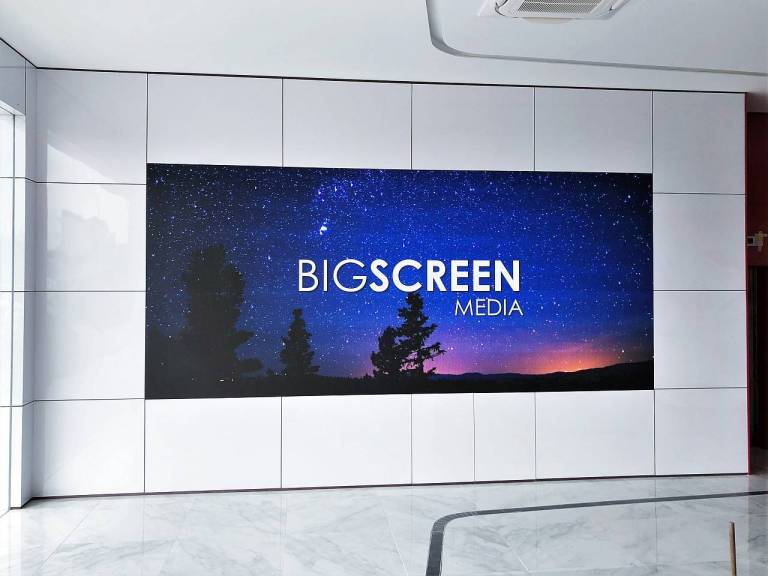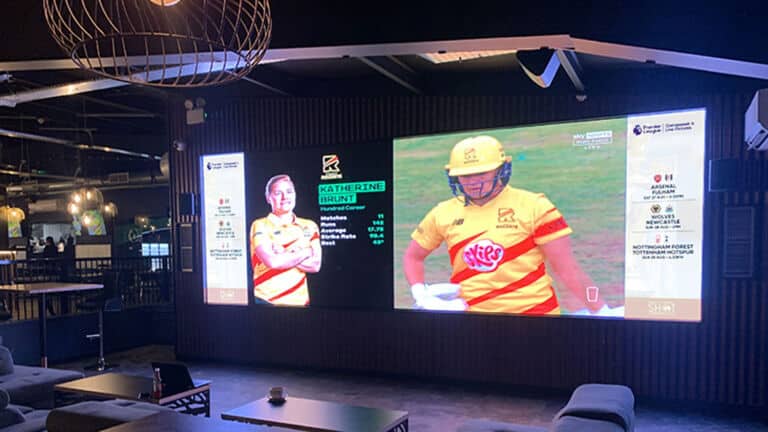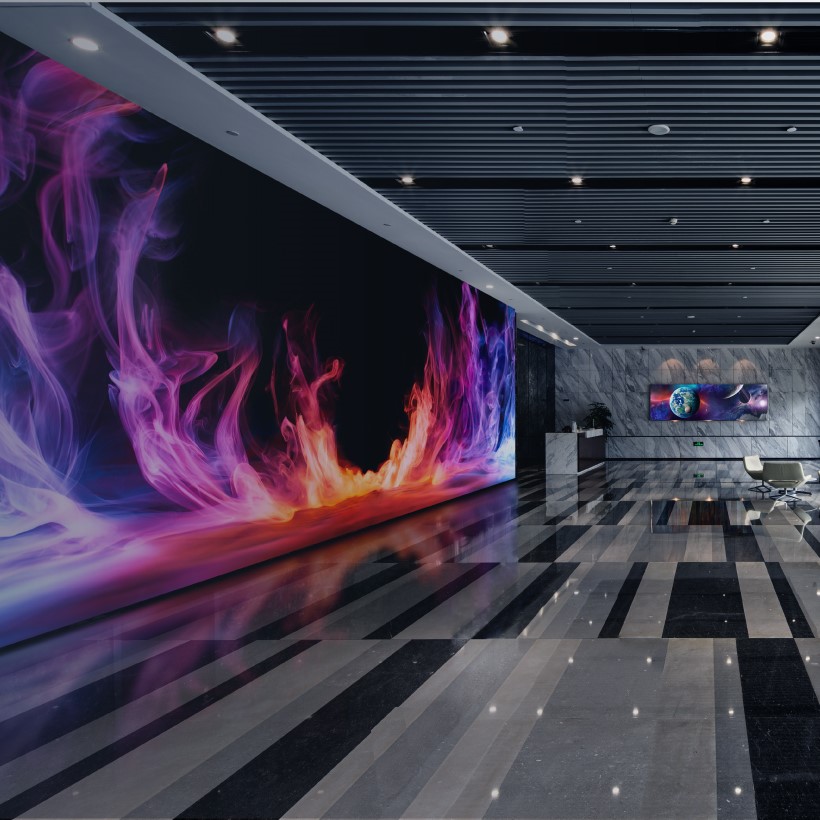Free Suggestions For Choosing Quality Rental Led Display
Wiki Article
What Is The Significance Of Brightness And Contrast Ratio In The Led Display Research?
The brightness and contrast ratio are crucial elements to be considered when looking into LED displays because they significantly impact the visibility, clarity, and overall quality of the display, particularly in various lighting conditions. Why are they so important?
1. Visibility in Different Lighting Conditions
Brightness: This is measured in candelas (candelas/square meters) and determines the clarity of the display under different lighting conditions. High brightness is required for outdoor displays, where the ambient light is intense (like sunlight). This will ensure that the display content is visible. Indoor displays usually require lower levels of brightness (between 500 and 1,500 nits) but the brightness can be adjusted for different environments.
The display should be bright enough to work in bright surroundings and also outdoors. Insufficient brightness will make the display inaccessible, since the display content may be lost or disappear in the direct sun.
2. Image Clarity and Quality
Contrast: The contrast between a display's brightest color and darkest black is called the contrast ratio. A higher contrast rate enhances the image depth by making the colors more vibrant and also enhancing the sharpness of the images. This is crucial when you are displaying motion-based content, like videos or images that have high contrast.
Displays with high contrast ratios, making them more suited to complex content, like films, ads, and broadcasts. Displays with low contrast for instance, could make dark areas appear grey and reduce the impact of images.
3. Color Accuracy of Visual Impact
Color Accuracy and Brightness Color Accuracy and Brightness play a significant aspect in the accuracy of color. Displays that are bright enough and consistent can accurately reproduce colors that is vital in advertising, branding and other types of content.
Contrast and perceived brightness: A high contrast level can boost the perceived brightness of the display. Even if two displays have the same nit rating, the one with the higher contrast ratio is likely to have more vibrant and eye-catching images.
4. Energy Consumption
Energy efficiency and brightness Energy Efficiency and Brightness: Higher brightness levels typically require more electricity. Displays that are operating 24/7 or part of large-scale installations, it is essential to balance brightness needs as well as energy efficiency. LED displays that are energy efficient are now available, which offer bright brightness while requiring low power consumption.
5. Content Versatility
Brightness for different types of content Based on the content type, such as text static images, text or videos that are dynamic--the brightness and contrast requirements may vary. Text-based content, for instance requires a lot of contrast to read, while video content might require a combination of low contrast and brightness.
Application: In environments in which the content type is constantly changing (e.g. advertising screens or event display) it is advantageous to have contrast and brightness adjustable settings. This will allow the display screen to adapt to the needs of different content types.
6. User Experience
Brightness Adjustability: Displays with either automatic or manual brightness adjustments will provide better user experience, adapting to the changing light conditions throughout the day. This makes sure that the display will remain clear without causing glare or eye strain.
Contrast & Eye Comfort: A high ratio of contrast may reduce eye stress, making the display more engaging for extended periods. This is especially important for displays in public areas, events as well as retail settings.
Conclusion:
The brightness and contrast ratio are crucial to ensure that the LED display will perform at its best in the setting it is intended for providing clear and vibrant content. These elements have a huge impact on how the LED display will perform in its intended environment, regardless of whether it is used outdoors, indoors, or at an edgy or dim setting. These aspects, together with the energy efficiency and the content requirements you have to meet will help you select the ideal display. Take a look at the most popular smd screens for website recommendations including display screens, display light led, led video wall, outdoor digital screens, video wall church, display device, wall tv led, led display transparent, transparent led screen display, church video wall and more.

What Is The Importance Of Weight And Portability When Looking Into Led Displays?
It is vital to weigh and consider the versatility of LED displays when analyzing them, especially for certain applications where flexibility, installation and ease-of-transport are major concerns. These aspects are important for a number of reasons.
1. Installation and Setup is simple.
Weight LED displays that weigh less are easier to install, especially when they need to be mounted to ceilings, walls, or any other structure. Heavy displays require more robust support structures, which may make installation more difficult and increase expenses.
The portability of portable displays allows them to be set up quickly and removed and taken down, which makes them perfect for temporary installations, events, and trade shows. They're lightweight and easily transportable, which reduces the amount of time it takes to set up each display.
2. Renting and staging
Moving displays often LED displays that are light and portable are essential in staging and rental marketplaces where display are moved around from one location to another. They lower the cost of transportation and make it easier to turn around between events and minimize damage.
Modularity LED portable displays have modular designs which make them simple to put together and take apart. The versatility of the display is key to creating custom configurations to meet event requirements.
3. Structure Requirements
Support Structures. For displays with heavier weights you'll require more complicated and costly mounting structures. These can add cost and complexity to the installation. On the other hand light displays can be positioned on structures that are simpler and more affordable, making them more flexible.
Venue restrictions: Some venues may have weight limitations particularly for ceiling wall or ceiling mountings. A light display will guarantee that you're able to install the display without exceeding the weight limit.
4. Transport and Logistics
Shipping costs: Weight of LED displays have an impact directly on shipping and handling fees. Less expensive displays are easier to ship, especially when they are used for large-scale deployments and international transport.
Storage and Handling: Lightweight and portable displays are easier to store and transport which requires less space and a simpler logistics process, which is essential for businesses who often transport displays to different places.
5. Flexibility of Utilization
Configurability. Lightweight, portable displays typically have modular design and can be configured with various sizes and shapes to accommodate the requirements of various purposes. This is beneficial in installations that require a flexible design.
The versatility of these display can be utilized in a variety of situations ranging from small outdoor pop-ups to large-scale events. They provide versatility unlike other display options, which are more heavy and bulkier, are not able to match.
6. Safety Considerations
Lighter Displays Reduce Risk They are also safer to use and install and install, which means there is less risk of damage or accident. It is vital in areas that require frequent adjustments or movements of the display.
Compliance: In many cases the safety regulations will determine the weight limit that can be set for installations especially when it comes to public spaces. To ensure compliance, it is important to check that your display is in compliance with the regulations.
7. Energy Efficiency
Despite not being directly linked to weight displays that aren't directly linked to weight are often designed for energy efficiency. Portable LED display may use less power which is an excellent benefit for environments with little energy sources or who are trying to cut the operational expenses.
Conclusion:
LED displays should be viewed for their weight and portability, especially when they are employed in applications with frequent movement. These factors affect not only the setup and transport, but also the safety and expense of the display. If you're looking at LED displays that weigh a lot, weight and portability are crucial aspects to take into consideration if the application is one that needs frequent relocations, fast installation, or conformity with structural or safety requirements. Check out the top led rental screen for website recommendations including transparent led screen, transparent led screen display, display light led, led panel transparent, outdoor led screen, monitor transparent, flexible led screen display, outdoor digital screens, led screen display rental, led display rental and more.

What's The Purpose Of A Content Management System?
The consideration of the Content Management System and compatibility is important when researching LED display options. This is especially true for applications that require the content to be updated regularly or managed from multiple locations and connected to digital systems. Here's the reason why CMS and compatibility are essential:
1. Content Ease Management
CMS Functions: A robust CMS allows you to easily make, schedule and manage your content on your LED display. It comes with a user-friendly interface that lets you upload your content, create playlists and set time slots for display. It makes it simple to keep your content relevant and fresh.
Importance: For businesses that require updates to their regularly, like retail stores advertising networks, retail stores, or even event venues A robust CMS reduces the time and effort required to manage display.
2. Controlling remotely and flexibility
Remote Management A reputable CMS can allow remote management for displays. This enables content to be updated remotely from any location. This is crucial for businesses that manage multiple displays on various sites. It facilitates central management and ensures consistency of messaging.
Application: In situations such as digital signage networks, corporate communications, or educational institutions, where the displays are distributed across multiple locations remote management capabilities are crucial for maintaining cohesive and timely content delivery.
3. Scheduling Automation
Content Scheduling - A CMS that has scheduling features allows you to schedule your content in advance so that the correct messages will be shown at the correct time. This is useful to target particular audiences during certain times of the day or for special events.
Automated updating of content could save time and help keep content updated. This is especially beneficial in dynamic environments such as airports. hotels, and huge spaces.
CMS CMS is an excellent tool for businesses managing content 24/7, such as transport hubs, broadcast news or big retail chains. It comes with features like scheduling and automation to help them run their business effectively.
4. Compatibility with Existing Systems
Integration: To ensure smooth operation, it's important to ensure compatibility with current IT infrastructures media players, as well as software systems. CMS systems that are able to integrate with other digital tools, like CRM analytics software, as well as platforms for creating content are extremely beneficial.
Compatible with all other systems in situations like smart city and retail environments and corporate networks, or in environments that incorporate customer information.
5. Scalability
Future Expansion Scalable CMS allows you to grow alongside your business. It is a great tool to build new display options, expand into different areas, and also manage larger content databases.
Application: If a company intends to expand its operations, whether it's an established retail chain, hospitality group, or if they are part of diversified companies, then a scalable CMS will ensure that their digital signage infrastructure can expand with their company.
6. Content Variety and Support
Content Types Content Types - The CMS must support different types of content, like videos, images, interactive content, and text. This flexibility allows for the creation of exciting and diverse content that can be specific to the audience you are targeting.
Application Multi-content support is crucial in environments where diversity of content is essential for educational institutions and entertainment venues.
7. Security and Access for Users
Role-based Control: A CMS that has a role-based control system provides various levels of permission for various users. This makes sure that only authorized users can modify content that is critical to the organization.
Security Secure: A CMS with strong security is vital to protect users from access that is not authorized. Unauthorized access could lead inappropriate or damaging content to be displayed.
Applications Security and access based on role are essential for companies which have multiple users managing content. This includes corporations, universities and government entities.
8. Real-Time Content Updates
Live Content Integration: Some applications will greatly benefit from the ability of the integration of live feeds and changing content in real time (such live news, social media or event coverage). This is important, especially for live broadcasts and events.
Application: In settings including arenas for sports and live event venues like broadcasting studios or news stations live updates of content is a great way to make sure that the audience receives most relevant information.
9. Analysis and Reporting
Performance Metrics. An effective CMS should provide analytics and reporting capabilities that let you track your content’s performance. Understanding the satisfaction of viewers as well as the ROI and efficiency of your content are important for future content optimization and to ensure that the display's goals are met.
Applications that provide analytics and reporting are essential for companies who rely on data to make decisions. This includes advertisers, retailers, and public information systems.
Conclusion:
A robust CMS and compatibility are key elements of a successful plan for LED displays. They facilitate efficient management of content, ensure seamless integration with current systems and support the scalability and flexibility needed for diverse and ever-changing applications. Prioritize the use of a CMS when researching LED displays. It must be compatible with your business requirements and support a range of content types, offer robust security and provide the tools needed for effective content delivery. These features not only improve the performance of LED displays, but increase the effectiveness and return on their investment. Have a look at the best lightweight led screen for blog recommendations including flexible led screen, flexible led display screen, led wall panels, outdoor display led, video wall tv, led screen display rental, led in walls, led light sign board, flexible led screen, display screen led and more.
